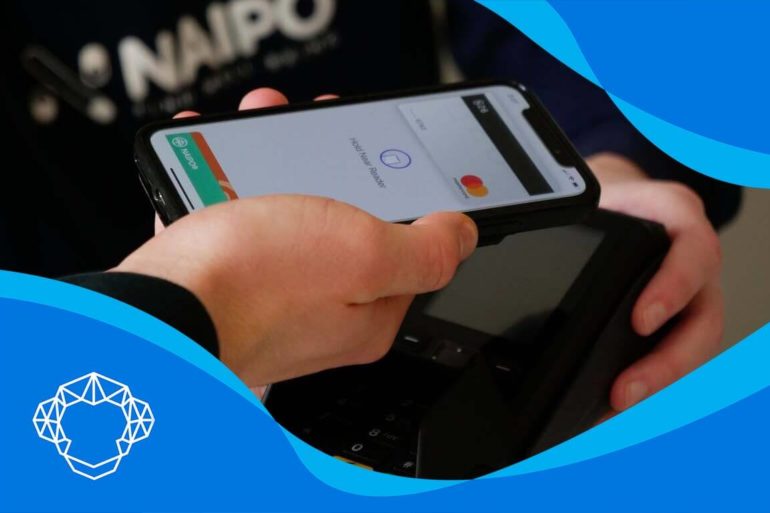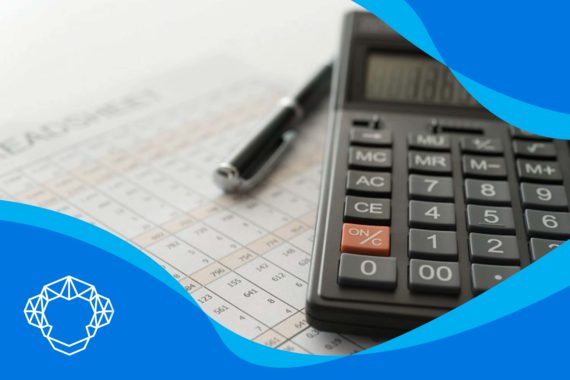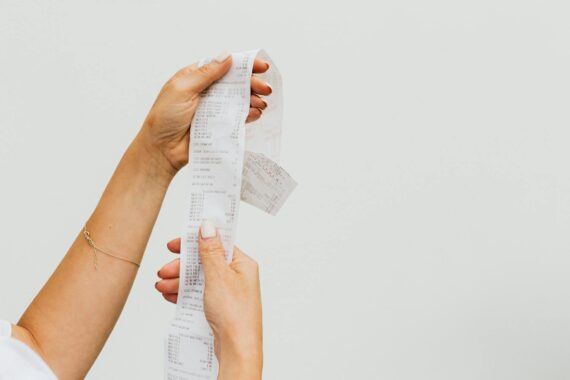You’ve undoubtedly heard of it and probably own a smartphone that supports it, but what is NFC on a phone or other devices? Also, how exactly are merchant services for credit card processing and this technology related? And what does it mean for a seller and customer? Improve your business and know how to use this revolutionary discovery in the best possible way.
Near Field Communication, commonly known as NFC, is now found on nearly all smartphones and other smart devices. In a simpler vocabulary, it’s a standard wireless communication based on proximity. However, unlike Bluetooth or Wi-Fi, the contact of this feature is confined to a very short distance.
What Is NFC on My Phone?
Knowing the right answer to a question of what this feature stands for will surely help your business. However, besides taking care of everything to make your enterprise grow, for example, picking one of the credit card processing companies and the best credit card processing for small businesses can take you a lot of time. And this means you can’t truly dedicate yourself to this topic. But don’t worry! We’ll cover some of the most important aspects of this technology and how it could help your company.
So, this technology is based on RFID (Radio Frequency Identification) and works by producing a “near field” (maximum 10 cm) using high frequencies to allow users to interact with equipment that has this feature – mostly smartphones. And the buzziest are Apple Pay, Android Pay, and Samsung Pay.
What Is the Main Difference Between NFC and RFID?
The main difference between RFID and NFC is their communication ranges. If the RFID tag has a power source, communication can occur over even longer distances (imagine a hundred feet or more). And NFC, on the other hand, has a restricted communication field. In fact, the maximum distance is only a few centimeters. Furthermore, in most mobile phone applications, the software will only commence communication if there is physical touch. This is to avoid unintentional triggering, which is especially critical now when the technology is being used to send sensitive information.
Once you’re aware of the main differences between these two terms, you can start planning how to apply for a merchant account and check what a payment gateway is and some of the best PayPal alternatives. All these topics are extremely important to figure out if you wish your customers have the possibility of contactless payments.
How Does This Technology Work?
Figuring out how technologies nowadays work can be just too overwhelming for some people. In fact, starting a business will require choosing one of some of the most convenient e-Commerce payment options. And this means you need to check how credit card processing works and also what average credit card processing fees are. But what about NFC, how does this work?
The reader device basically creates a magnetic field by delivering an electric charge through a coil. When a tag (with its own coil) is close to the field, the tag generates an electric current without wires or even physical touch. After the initial “handshake,” the reader receives any stored data on the tag via wireless transmission.
When another NFC device enters the previously selected 4-inch range, a connection is instantly established. When the two devices are in range, they quickly communicate and deliver prompts to the user. Another interesting feature is that devices function as both readers and tags. This bidirectional capacity enables you to utilize a single piece of gear, such as your smartphone, for several purposes.

What Can You Use NFC For?
NFC can do many tap-and-go operations, and digital wallets such as Apple Pay, Samsung, and Google Pay only scratch the surface. This can be quite helpful when you search for small business ideas. NFC allows music fans to rapidly connect their devices to speakers, as well as log in to their computers, unlock car doors, and track health and fitness information.
This technology is revolutionizing public transportation, too; in some cities, you can use an NFC on a smartphone to board a bus or have it as a metro pass. You can use an app to add money to the metro or a bus pass, guaranteeing that you have enough money on your card. This technology can support loyalty cards as well as student IDs. So, here are a few popular uses of the technology:
- Data transfer – Google debuted Android Beam with the launch of Android Ice Cream Sandwich in 2011. With this feature, you may send whatever material or data was on-screen to other NFC-enabled smartphones. To accept the transfer prompt, all you should do is touch the backs of both devices. Nearby Share, which employs Bluetooth and Wi-Fi Direct technology instead of Android Beam, was only recently shelved.
- Mobile payments – For contactless purchases, Apple Pay, Samsung Pay, and Google Pay all use your smartphone’s NFC chip. The majority of credit and debit cards now include an NFC tag. With permission from the originating bank or financial institution, the above-mentioned apps merely imitate these marks. Simply bring your smartphone or another device near the card reader once it has been configured.
- Quick pairing – extends to devices without a screen. It is used to share connection information with your smartphone with numerous wireless speakers and headphones. It’s also used by some cameras to instantly establish a Wi-Fi Direct connection for a quick photo and video sharing.
- Public transport access – NFC-based cards are used as an access control method for public transportation in numerous places, including London, Hong Kong, and Singapore. Some systems even work with payments apps like Google Pay, allowing you to avoid carrying your card.
- Gaming – Nintendo uses the technology to link video games with physical toys. An Amiibo is similar to a regular trading card or action figure, including an embedded NFC chip. And when you bring one of these close to a 3DS or a Nintendo Switch, it will instantly provide your extra characters, stages, or bonus stuff for a specific game.
- Home automation – NFC is also supported by a few smart home technologies, including Home Assistant and iOS’s HomeKit. You may control automation or devices, too, by simply using iOS or Android to configure off-the-shelf tags.
What Is an NFC Mobile Payment?
When it comes to different e-Commerce business models, you indeed have to be aware of NFC mobile payments, meaning it’s becoming probably the main way people use to pay for their purchases. It’s because apps like Apple Pay, Google Pay, and Samsung Pay can enable this feature to simulate a contactless debit or credit card on your smartphone. Because payment terminals use NFC, your smartphone effectively emulates the data contained on your card. Because the process requires authentication with the bank, only the account holder can add a card.
Mobile payments have grown increasingly popular as we move closer to a cashless society. When you place your smartphone within four inches of a contactless scanner at a store, your digital wallet or passbook will appear and ask you to confirm your payment. With Apple Pay, this entails either placing your finger on the Touch ID-enabled Home button or double-tapping the Power button to use a Face ID. Also, NFC payment is supported with Samsung Pay and Google Pay.
Is NFC Secure for Your Payments?
Knowing that this kind of mobile payment is one of the safest ways to make a purchase will ease your worries about preventing credit card fraud. In fact, credit card processing companies that support these payments on balance are more secure than traditional scanned transactions. However, the merchant ID is necessary. Furthermore, payment security technologies such as encryption and tokenization lessen the danger of physical card and card number theft.
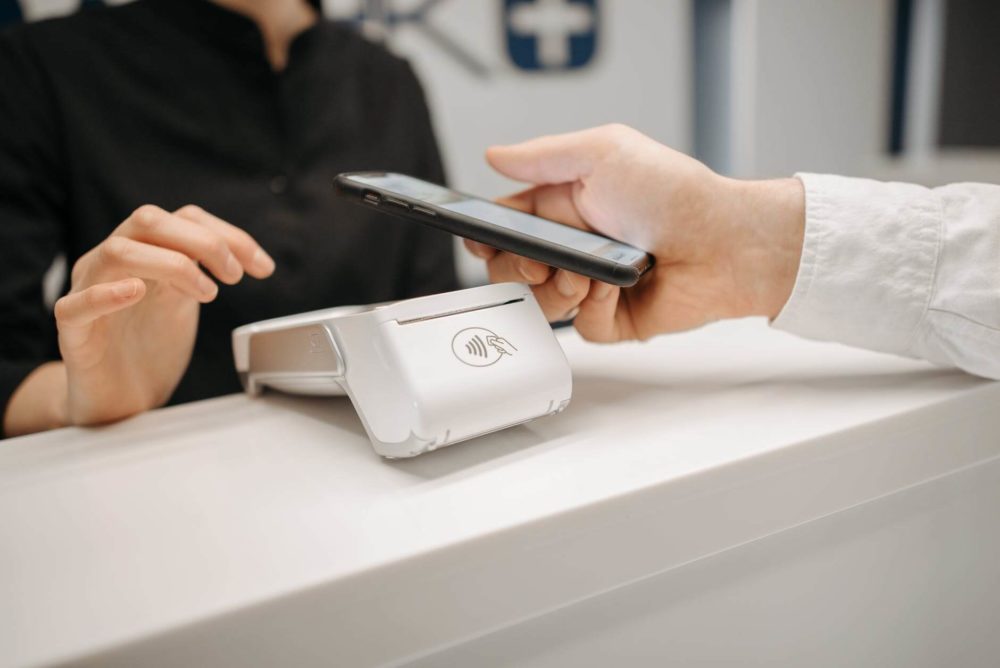
What Is Better – NFC vs. Bluetooth Device
NFC isn’t the only wireless transmission method available. In fact, related technologies like ultra-wideband and Bluetooth are still present. So, why add another? One of the main advantages is that it doesn’t require manual input or pairing to make a connection – tapping only takes a second. On the other hand, Bluetooth devices must be paired with one another, which is a time-consuming process.
Because the transmission range is still so small, NFC is also substantially higher energy-efficient than UWB and Bluetooth. So, when compared to Bluetooth, NFC consumes less power and is faster to operate. And because of that, certain devices, such as the iPhone, can use it in emergencies. This implies that even if your phone runs out of battery, the chip will receive just enough power to allow you to access your car, campus, or hotel room.
Do All Devices Have This Feature?
For several years, NFC has been a standard feature in cell phones. Back in 2010, the Nexus S was the first Android equipment to incorporate it. iOS eventually adopted the technology in 2014. Wearable devices include it as well (for example, fitness devices like smartwatches). So, having this in mind, you can decide what’s a better option for your business – online or traditional shopping. Explore the most common mistakes business owners make and know how to start a dropshipping enterprise.
How Can You Launch This Technology on Mobile Devices?
What are the most successful small businesses and the best cities to start a company, these are the questions you shouldn’t omit. However, include figuring out what credit card processing services are and some research when it comes to launching NFC. The more you know, the better you can run your company.
So, when it comes to iPhones, the good news is that you won’t have to turn it manually. iOS will do it for you whenever you want to use this Apple Pay on your iPhone. And as a result, you won’t even have to turn it off. For an android, it’s a different story. If you want to use this feature, you’ll have to go into the settings, and you’ll find it under the connected equipment option.
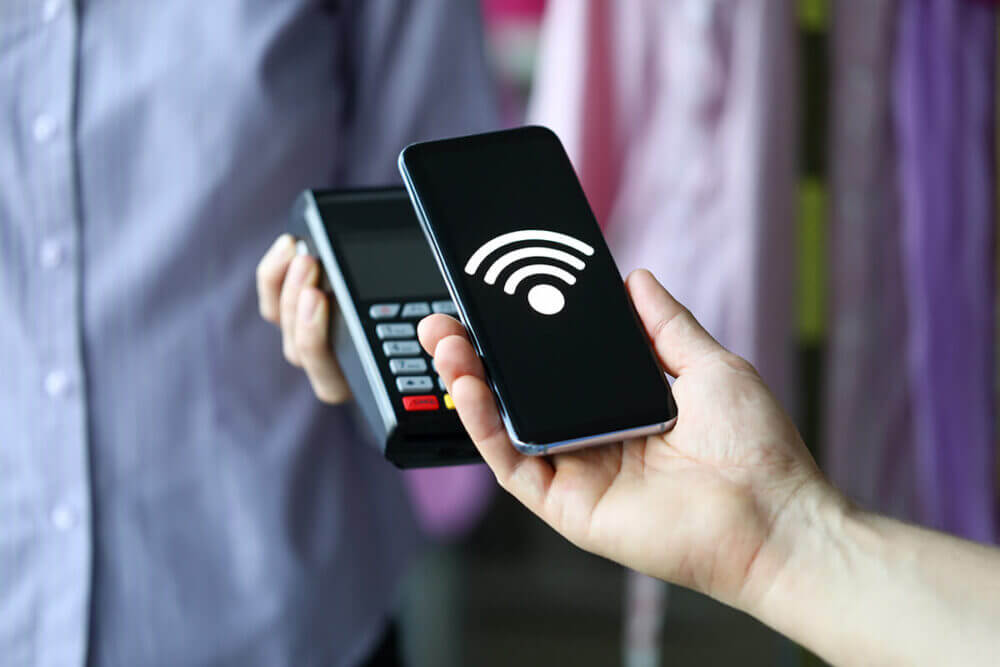
Frequently Asked Questions
What is an NFC tag?
It’s a small integrated circuit with a copper coil and storage capacity. Because it lacks a power supply, data can only be read or written to this tag when some other NFC equipment is brought close to it. The NFC device’s proximity provides power to the tag, allowing data transmission.
What is an NFC reader?
An NFC reader can be any powered equipment with its own NFC coil (such as a smartphone or tablet). The reading device generates an electromagnetic field with its battery, which activates any tag brought close to it. A payment terminal, which employs NFC to verify a debit or credit card, is another example of a reader.
How to know whether a phone has NFC?
If you have a modern iPhone (from 2015 or later,) it certainly has the necessary NFC hardware. On Android, go to Settings and search for NFC in the “Connected Devices” or “Network and Sharing” sub-menus. The majority of Android phones support NFC.
Welcome to a New Era – a Cool Way to Make a Transaction
Having compatible devices that will enable the wireless connection like NFC will save you a lot of time and effort. Contactless payments are the future, and you definitely should be a part of it. So, learn everything there is about this topic and expand your markets. That way, your business will gain more customers quickly.

